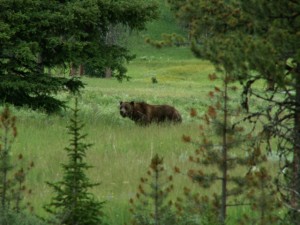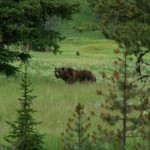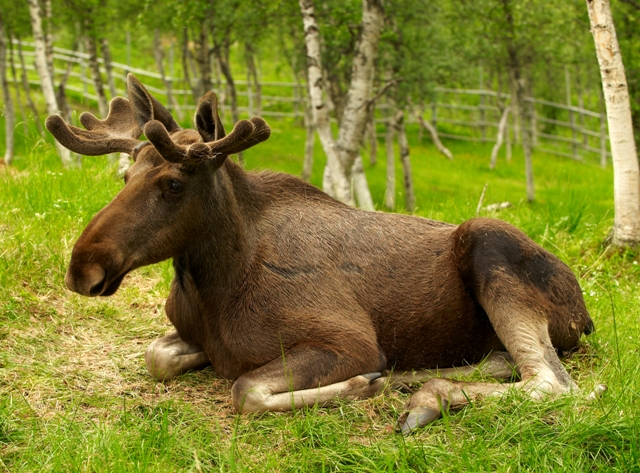February 16
Bigfoot – To Call or not to CallMany Bigfoot researchers believe that these animals communicate by calls and knocking. Just as hunters use calls to bring their prey closer, researchers have tried to bring in the creatures by filling the air with calls. However, some of the calls I have seen done on TV sound very similar to other animals found in the areas of investigations. There is also the possibility of contamination in the results by pranksters hiding in the woods and answering back. One particular call, used by Finding Bigfoot researchers sounds too similar to the high, sometimes shrieking, calls of the coyote.
Here’s a link from Finding Bigfoot where the investigators are Making Calls at Night. You can hear them talking about hearing coyote calls, and then another sound that they think is not a coyote. However, when they imitate the sound, it sounds just like a coyote call.
They also make grunting noises as another type of call. Unfortunately, the grunting noises sound similar to a number of animals, including bears and wolverines. Here is a bear cub calling for its mother, sounds like the grunt calls they do: Bear Cub Grunting.
Here’s a coyote barking and howling. Now I’ve personally heard them do this high-pitched howl longer (about 3 secs) without any barks or change in pitch Short Coyote Howl
The point here is that care should be taken to analyze calls heard in the wild. Just because a person has never heard anything like it before, does not mean it is not a known animal. The best method to attract a bigfoot would be to use recorded calls played back in the woods. The reason that recorded sounds are normally banned from hunting activities is because they can be extremely effective. Recordings also eliminate the inaccuracy of a human voice replicating a call and ensure all the fine nuances of a call are replicated.
Check out other recent posts on Bigfoot:
[postlist 1]
Don’t forget to look up new posts and theories on Bigfoot by clicking on the Bigfoot Category from the top left link.


February 13
Bigfoot – Why not more Alaskan Research? When researchers discuss Bigfoot sightings, they almost exclusively talk about the northwestern United States, Washington and Oregon area. I wondered why there was not more talk about Alaska, a place with over 650,000 square miles and vast wilderness doesn’t have more Bigfoot sightings? Perhaps it is because of the uniqueness of way of life in Alaska that offsets the ability to have Bigfoot sightings. You see, in Alaska, people are used to living in areas with large animals. Alaska is home to the largest bear population in the United States, and is home to the largest of the deer family, the moose. Wildlife, as is common knowledge, is plentiful here. As such, Alaskans are especially careful when going out into the wilderness. In bear country, we make sure to make plenty of noise by singing, talking loudly, and clapping. This bear safety basic is to help alert any bears in the area, “Hey bear, here comes a human, get out-of-the-way.” Bears are often shy creatures and will move when hearing people come. With Bigfoot an even shyier creature and more stealthy, they would have no problem avoiding an encounter.
When researchers discuss Bigfoot sightings, they almost exclusively talk about the northwestern United States, Washington and Oregon area. I wondered why there was not more talk about Alaska, a place with over 650,000 square miles and vast wilderness doesn’t have more Bigfoot sightings? Perhaps it is because of the uniqueness of way of life in Alaska that offsets the ability to have Bigfoot sightings. You see, in Alaska, people are used to living in areas with large animals. Alaska is home to the largest bear population in the United States, and is home to the largest of the deer family, the moose. Wildlife, as is common knowledge, is plentiful here. As such, Alaskans are especially careful when going out into the wilderness. In bear country, we make sure to make plenty of noise by singing, talking loudly, and clapping. This bear safety basic is to help alert any bears in the area, “Hey bear, here comes a human, get out-of-the-way.” Bears are often shy creatures and will move when hearing people come. With Bigfoot an even shyier creature and more stealthy, they would have no problem avoiding an encounter.
Imagine if an Alaskan did see a Bigfoot. Unless they were in feet of it, they would probably just dismiss it as a bear. Many Alaskans believe that Bigfoot sightings in Washington and Oregon are just misidentified bears. Since we see bears so often, we might find it hard to believe something we see was anything but a bear.
Coyotes and wolves are also very plentiful in Alaska. Coyote cries are often heard even near towns. When I watch the Finding Bigfoot show, I believe they are misidentified coyotes cries, which can sound like someone screaming or wailing, and not the typical howl. Of course, if an Alaskan hears a cry or howl in the woods, we would be more apt to believe it was a bear, wolf, or coyote before thinking it was a Bigfoot.
Perspective plays a large part in Bigfoot research. If you live in an area in which you don’t believe there is a lot of wildlife out there, you might be more apt to believe something strange was Bigfoot. However, if you live in an area where you frequently see wildlife, then you might be more apt to believe something strange you saw was a normal animal and not a Bigfoot. An Alaskan camping in the woods and hearing something rustle around their tent, or seeing a big shadow hover over their tent will probably think it is a bear. But what if it was really a Bigfoot. Alaskans often know that bear tracks often over lap. But what if a track wasn’t an overlapped bear print. My point is that I believe more research teams need to come to Alaska. Hike out to the wilderness, off the beaten path, and research the dense wilderness here. If researchers talk to local hunters more, and ask them to record and photograph anything odd they find, more Alaskans might realize that what they are hearing, and seeing, just might not be the usual animals. In theory, what if Alaskans have misidentified Bigfoot?
Check out other recent posts on Bigfoot:
[postlist 1]
Don’t forget to look up new posts and theories on Bigfoot by clicking on the Bigfoot Category from the top left link.


January 30
Bigfoot – Bears, Moose, and UnicornsI then proposed a 2 part theory to her. The first was whether she believed that Bigfoot ever interacted with bears? Ranae replied that it was possible since, Bigfoot were believed to live in the same type of forested areas.
With that confirmation, from a “scientist”, I then proposed that if Bigfoot and bears lived in the same area, and Bigfoot were believed to be extremely territorial and aggressive at times, even killing deer, that could it be possible for Bigfoot and bears to fight each other? Since bears were known to even fight to the death with each other, is it possible that a bear might kill a Bigfoot, or vice versa? What if a Bigfoot was killed, and a hunter stumbled upon the kill and mistook that “bear kill” to simply be a moose kill?
Ranae’s response was, “the question is, would the moose be mistaken for a unicorn?” She then scolded me that I “theorized incessantly” and science was done by going out into the field and not making up theories while sitting at home. Of course, I was infuriated, and wondered if Einstein, who sat at a patent desk all day, theorizing about quantum physics, would agree.
You see, my theory was that a moose is a huge animal, with a huge rib cage. Bigfoot is supposed to be a huge animal, with by description a huge rib cage. When an animal is killed, after the main predator has their fill, other predatory animals come in and take what pieces they can carry away. That is why old kills often do not have all the pieces together in the same area. An entire carcass is hardly ever found whole, and all together. It is often scattered through out the area. So, my theory was that a hunter might stumble upon a carcass, and simply chock it up to be a moose kill from a bear, when in fact it could be a dead Bigfoot, whether by natural causes, or even a bear. My point to presenting this to Ranae was that her group, that was actually out investigating should examine and take in the evidence found by hunters. Maybe even invite hunters to report kills found, so that they could be investigated and confirmed as to what animal it was, and what animal killed it. Even if the body wasn’t a Bigfoot, maybe a Bigfoot killed it and thus DNA and hair might be left behind on the carcass. Proof from a carcass would be solid evidence of Bigfoot, and change the direction investigations were done. Instead of simply going out into the woods and waiting for noises, and wondering if they were pranksters or not. This method could provide the solid evidence needed.
The one thing I can thank Ranae for is her utter disregard to discussing other people’s theories and her belief that just because I don’t have the capability or funding to go out and do research, that my ideas were not even worth contemplating. I was infuriated that she so flippantly pushed me aside and openly mocked me, that she inspired me to create a place where others like me can discuss our theories openly.
In case you want to side with Ranae that only people who can investigate should theorize, then I suggest you talk to NASA who takes hypothesis from students and has the astronauts on the space station implement the experiments.
Check out additional Posts on Bigfoot below:
[postlist 1]
Don’t forget to look up new posts and theories on Bigfoot by clicking on the Bigfoot Category from the top left link.






